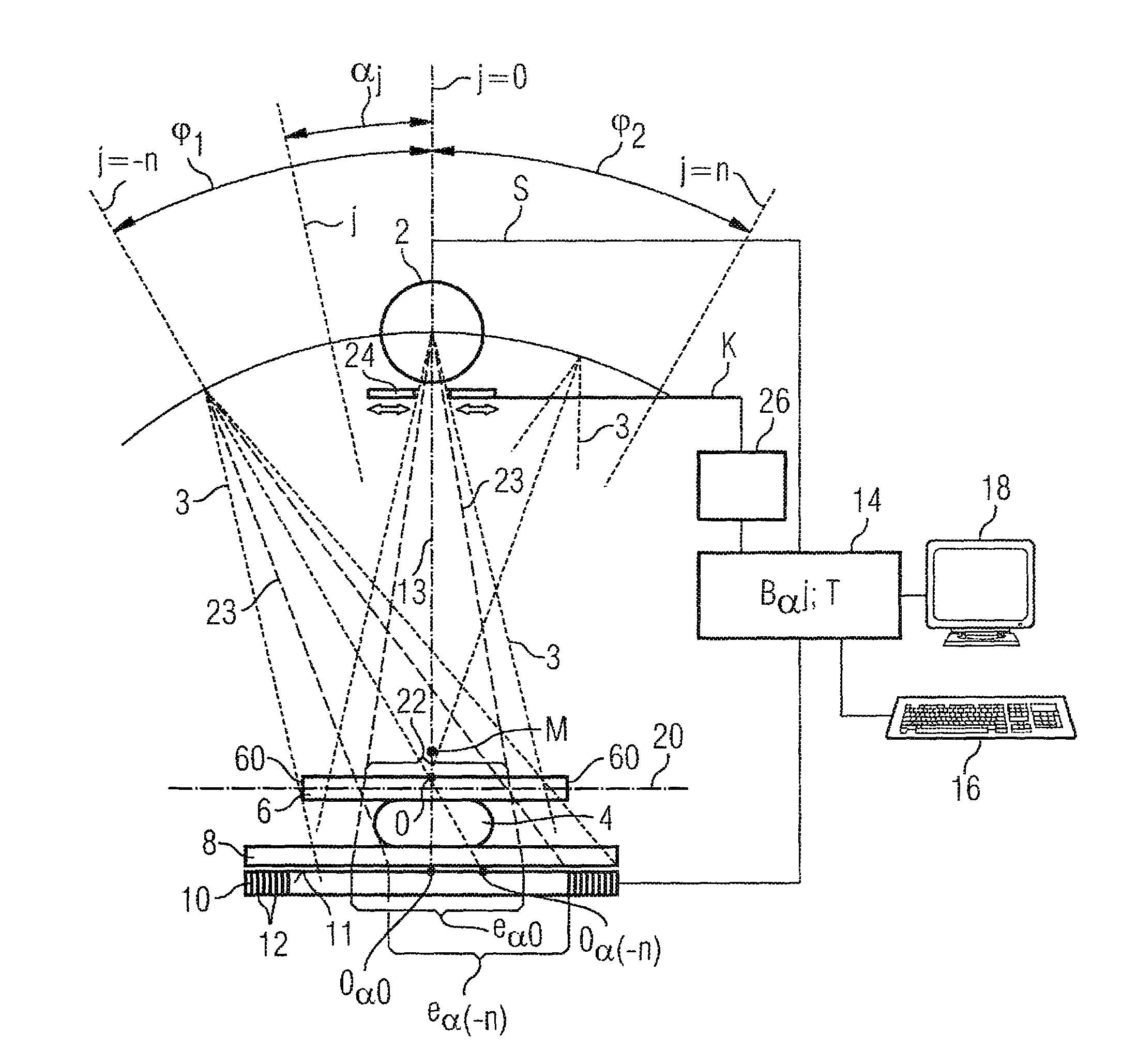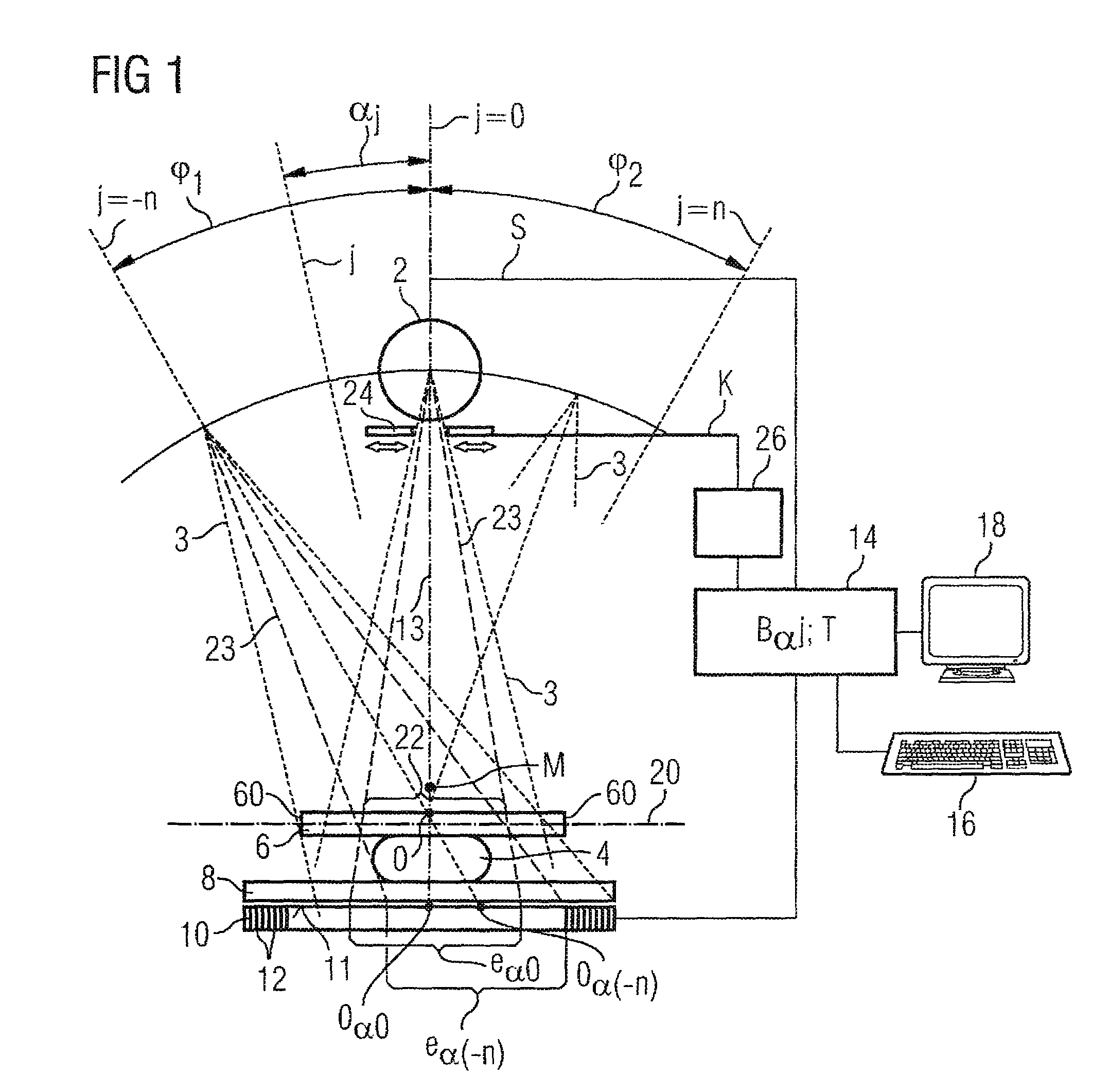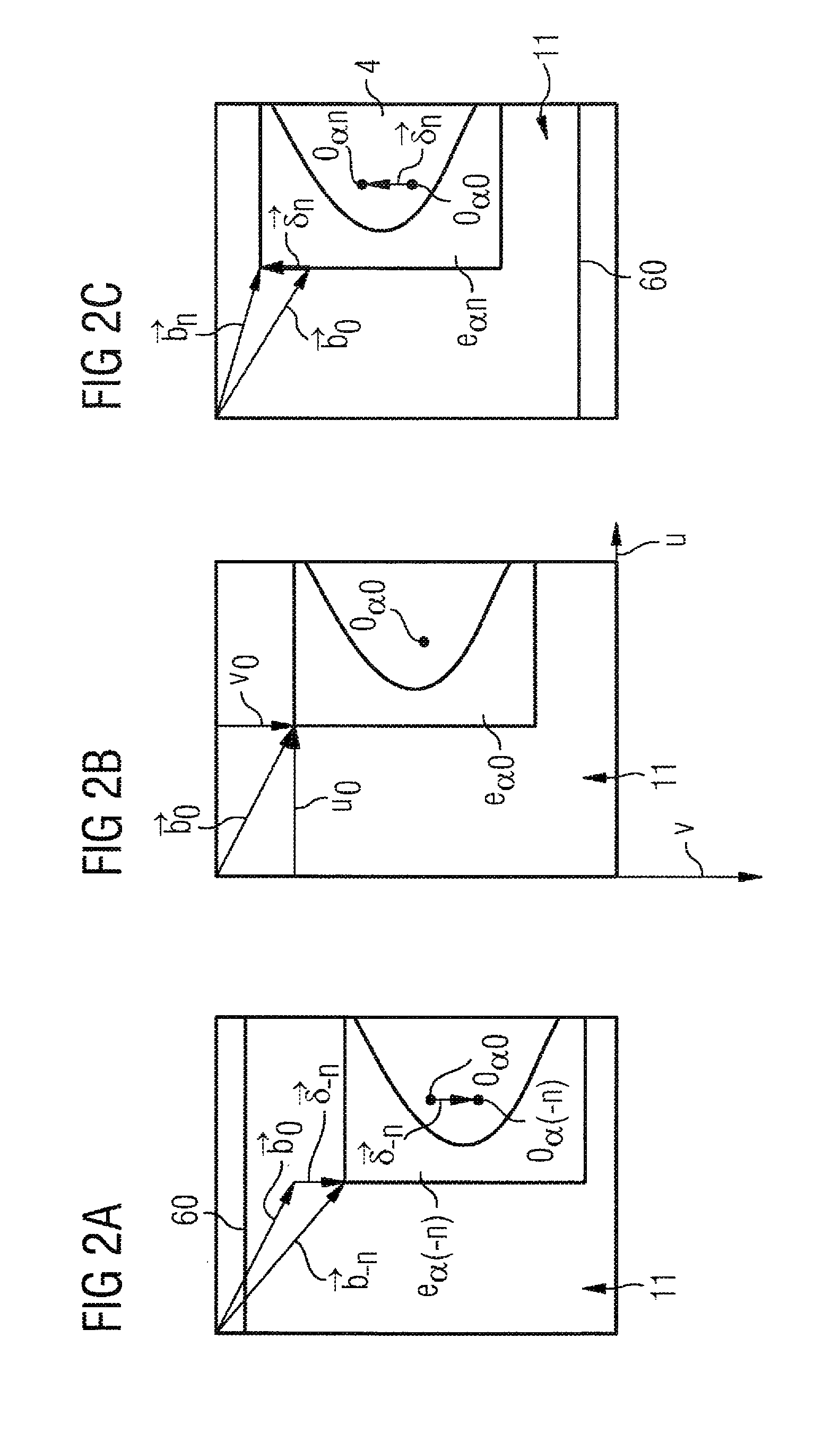Method and device for producing a tomosynthetic 3D X-ray image
a tomosynthetic and 3d x-ray technology, applied in the field of mammography, can solve the problems of affecting the diagnostically relevant regions of the x-ray image, affecting the image quality, etc., and achieve the effect of reducing the calculation and time cost of the reconstruction of the tomosynthetic 3d x-ray image and loss of image quality
- Summary
- Abstract
- Description
- Claims
- Application Information
AI Technical Summary
Benefits of technology
Problems solved by technology
Method used
Image
Examples
Embodiment Construction
[0017]According to FIG. 1, the device (a mammography apparatus in the exemplary embodiment) comprises an x-ray source 2 (normally an x-ray tube) to generate x-rays 3 that pass through an examination subject 4. The examination subject 4 is a female breast that is embedded between a compression plate 6 and a support plate 8. The x-rays 3 passing through the examination subject 4, the compression plate 6 and the support plate 8 are received by a large-area digital x-ray detector 10 that is made up of a plurality of individual detectors 12 arranged in a matrix-shaped array, the acquisition surface 11 of which x-ray detector 10 being arranged parallel to the compression plate 6 and to the support plate 8.
[0018]The x-ray source 2 is mounted so as to be spatially variable relative to the examination subject and can be panned in a limited angle range φ1, φ2 (for example on an axis M perpendicular to the plane off the drawing) into different angle positions j=−n . . . +n so that x-ray images...
PUM
 Login to View More
Login to View More Abstract
Description
Claims
Application Information
 Login to View More
Login to View More - R&D
- Intellectual Property
- Life Sciences
- Materials
- Tech Scout
- Unparalleled Data Quality
- Higher Quality Content
- 60% Fewer Hallucinations
Browse by: Latest US Patents, China's latest patents, Technical Efficacy Thesaurus, Application Domain, Technology Topic, Popular Technical Reports.
© 2025 PatSnap. All rights reserved.Legal|Privacy policy|Modern Slavery Act Transparency Statement|Sitemap|About US| Contact US: help@patsnap.com



